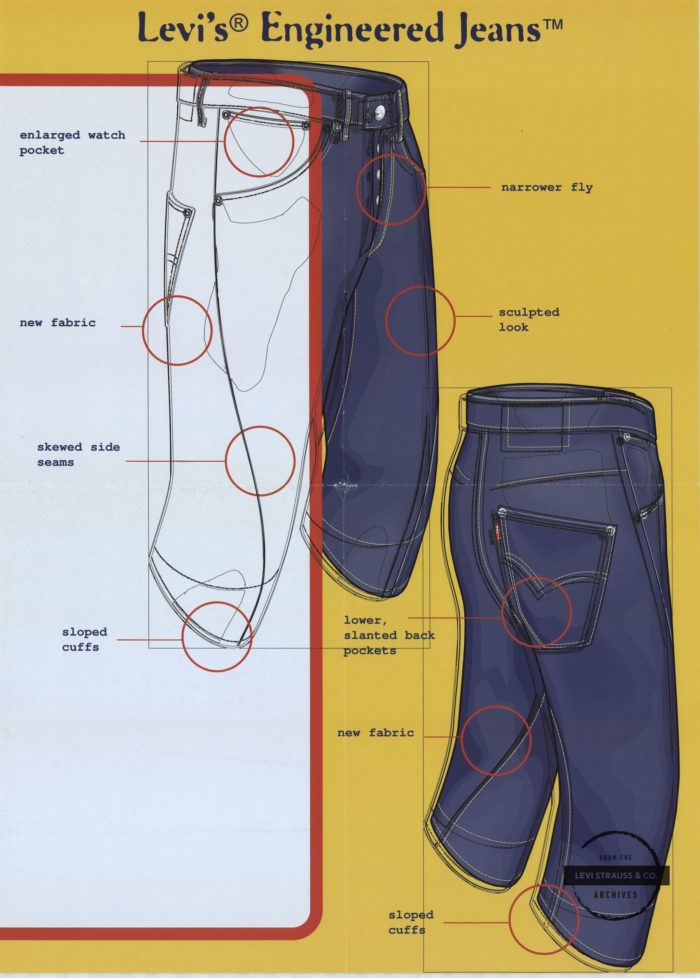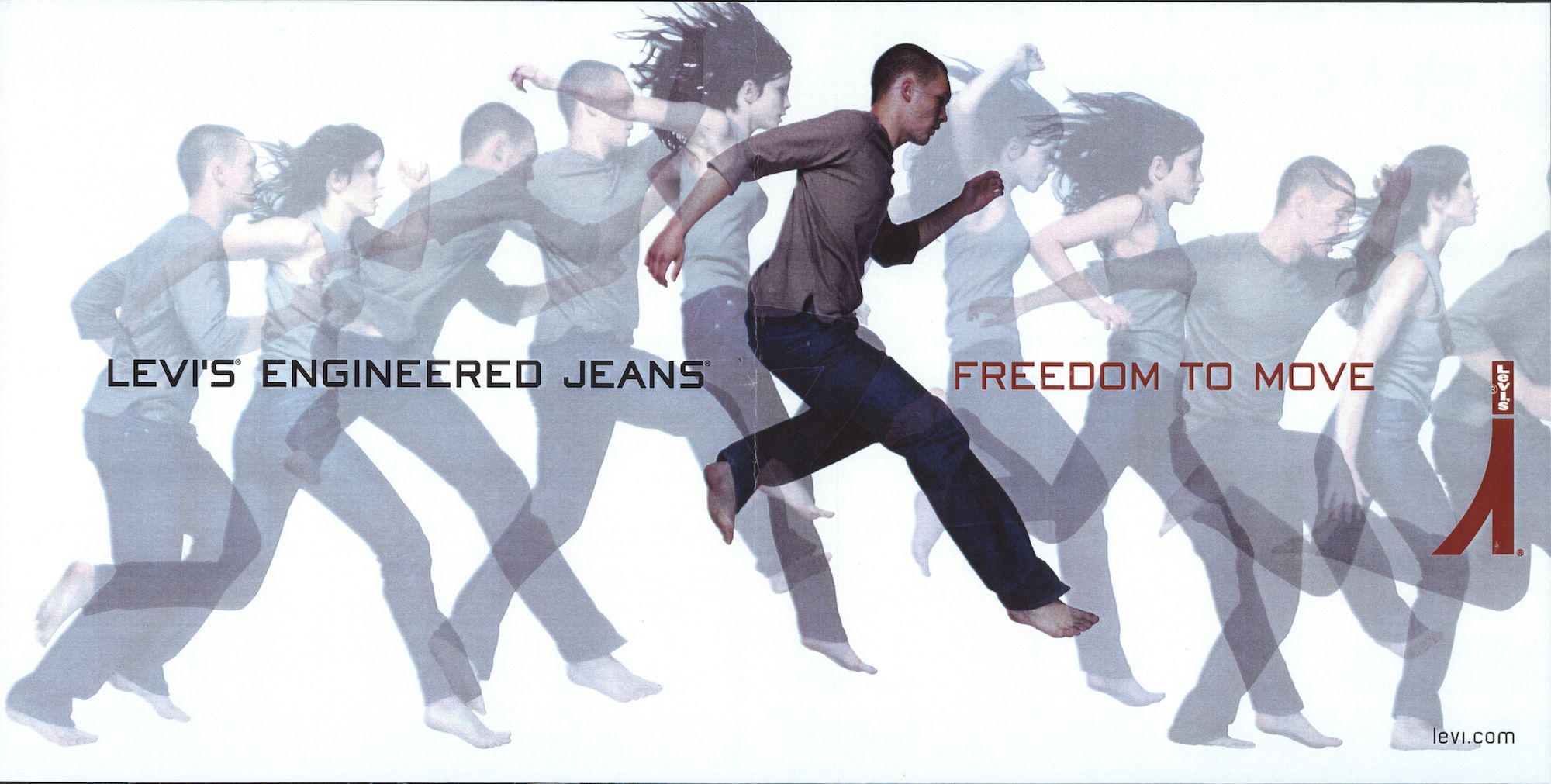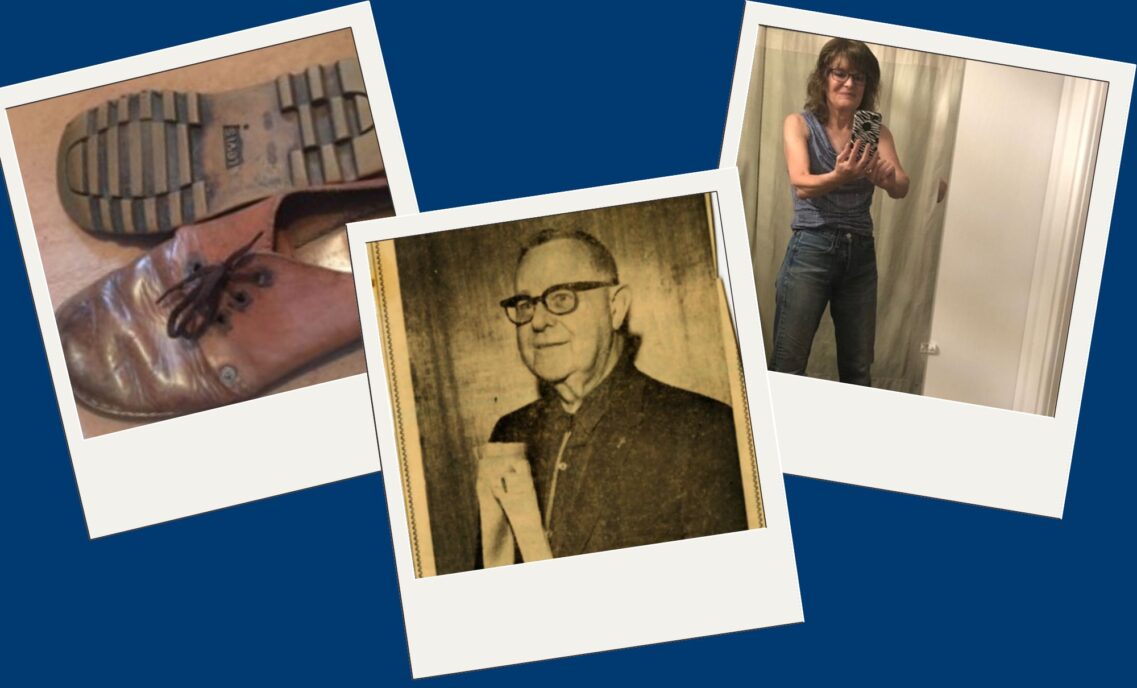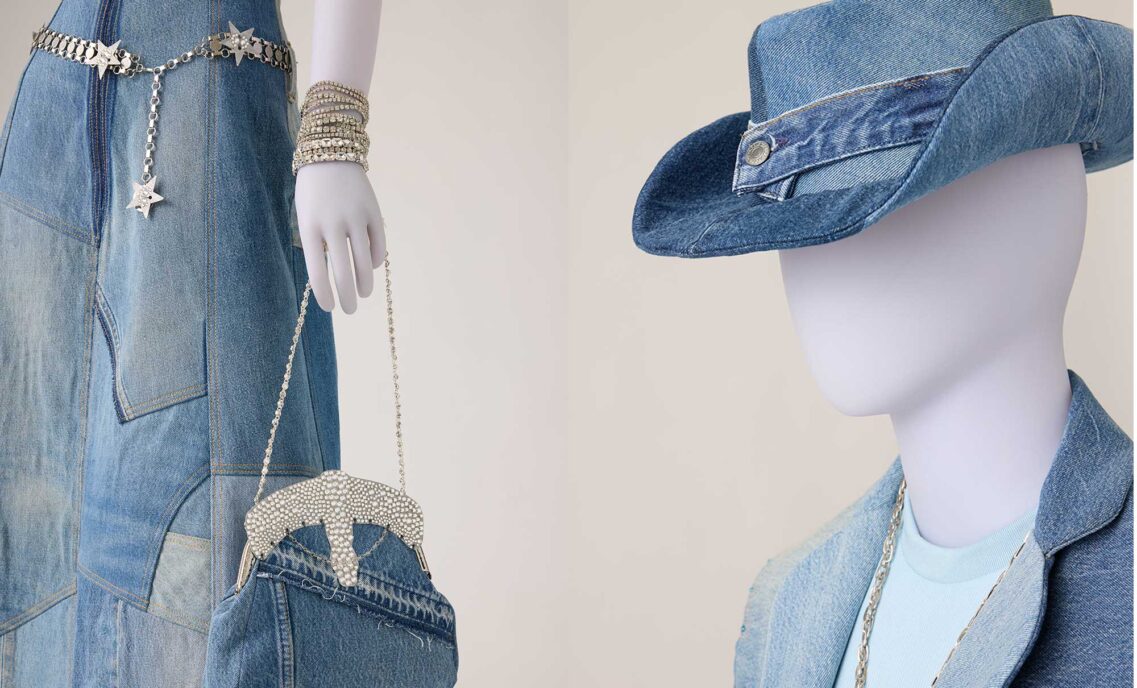Twenty years ago, Levi Strauss & Co. transformed jean design by introducing an innovative new concept, three-dimensionality.
The innovation grew out of a recognition that regular 501® jeans naturally developed a leg twist to the left due to the right-hand twill fabric construction. Levi’s® designers incubated their ideas, deconstructing and reassembling jeans in unique new ways to create an ergonomic collection with one key goal—freedom of movement. In 1999, LS&Co. launched the concept as Levi’s® Engineered Jeans™ (LEJ).
Redesigning for movement and comfort
To create LEJ, designers considered what a modern jean might look like and what people needed from their jeans. Working from scratch, they considered the core elements of jeans, from the fly and cuff to the watch pocket. The result was a sculpted jean with modern functionality.
Starting with a 3-D cutting pattern, front pocket scoops were enlarged for comfort and easier access. The small front watch pocket was also enlarged and reshaped for function. Back pockets were lowered to avoid sitting on one’s wallet and the traditional back yoke was replaced by darts for improved comfort. Cuffs were ergonomically-shaped and dropped down in the front to sit on the top of the shoe, but were shorter at the back to avoid drag. The jeans also included longer, skinner belt loops that were easier to use with a belt.

An Era of Experimentation
Designers were certainly taking an experimental approach during this era. While they were pushing the design envelop with LEJ, they also launched the Levi’s® RED™ collection, which featured a first-to-market green cast indigo that was designed for the rigors of modern life while providing a new standard in denim comfort.
Matt McGivern, who was the Levi’s® RED™ Product manager at the time, recalled how their work evolved and as a result, “The standard 5-pocket jean was deconstructed and redesigned for comfort and freedom to move.” That concept would also be applied to the LEJ design.
A Hit Campaign
For its launch, the LEJ campaign showcased the way the jeans allowed free movement and a form that followed the contours of the body. Ad spots in Asia featured Takuya Kimura who moved effortlessly in his jeans and LEJ jacket, both pieces molding to his body.

Artist and denim enthusiast Billy Hutchinson, who was finishing art school in San Francisco in 1999, was instantly attracted to LEJ when he saw them hanging in the window of the Levi’s® Store at Union Square. “You could see the person in it and the way the jeans were hanging with the twist in the seam. It was fantastic,” he says. “They had all the hallmarks of Levi’s pared down to its core. Simplistic and so well thought out.”
Billy purchased two pairs. He was drawn to LEJ’s design details, like the ergonomic seam at the hem and the ghost stitch on the back outlining where the label is usually affixed. “Brilliant,” says Billy. “It’s like when you leave on a sauce—boiled since 1853—and reduced since then.”
In Europe LEJ took off, embraced by Levi’s® fans who loved the 3-D fit. Creative advertising by Bartle Bogle Hegarty helped popularize the jeans. One of the most memorable was the Levi’s® Odyssey television spot shot by Jonathan Glazer. “It was a huge deal for my generation growing up,” recalled Matt McGivern, a former product manager for theLevi’s® brand.
The impact of the new design was significant, inspiring other denim brands like G-Star and True Religion.
From ’99 to 2019
Missed out on the collection the first time around? Well, you’re in luck – in honor of its 20th anniversary, Levi’s® Engineered Jeans™ are back in updated styles — all featuring that hidden yet oh-so-comfortable four-way stretch. The result is a vintage feel in a modern fit with details inspired by the original designs.
Look for the red two-horse back patch on the new designs along with the Levi’s® Engineered Jeans™ logo printed on the inner pockets and a Levi’s® Engineered Jeans™ printed hanger loop. It’s everything that made the ‘99 version such a success, but updated for today.







